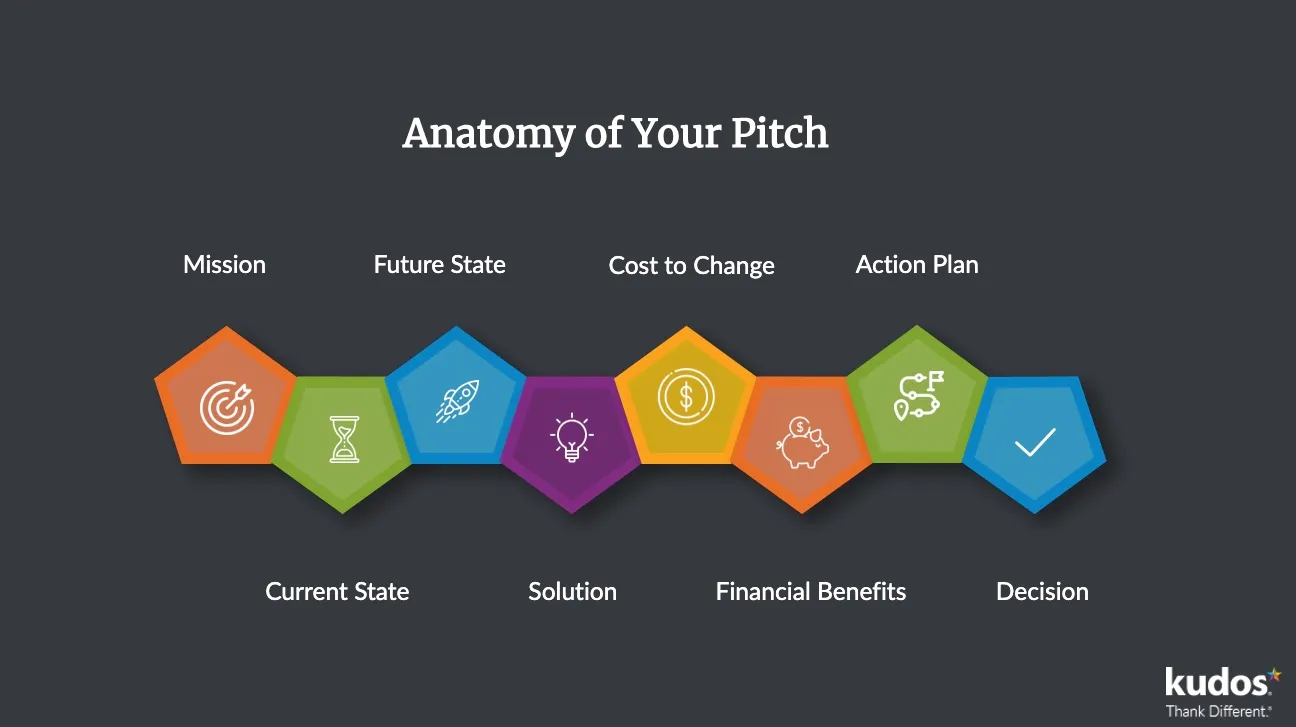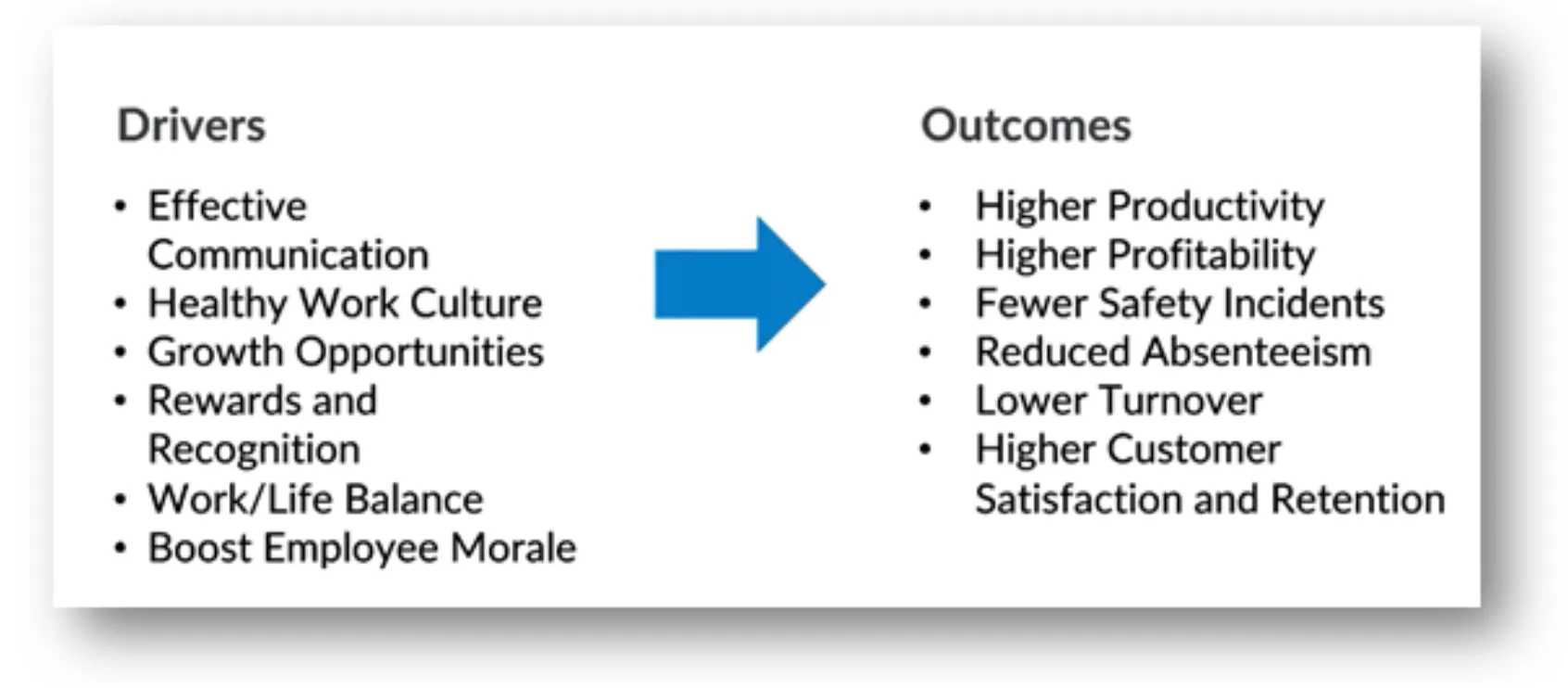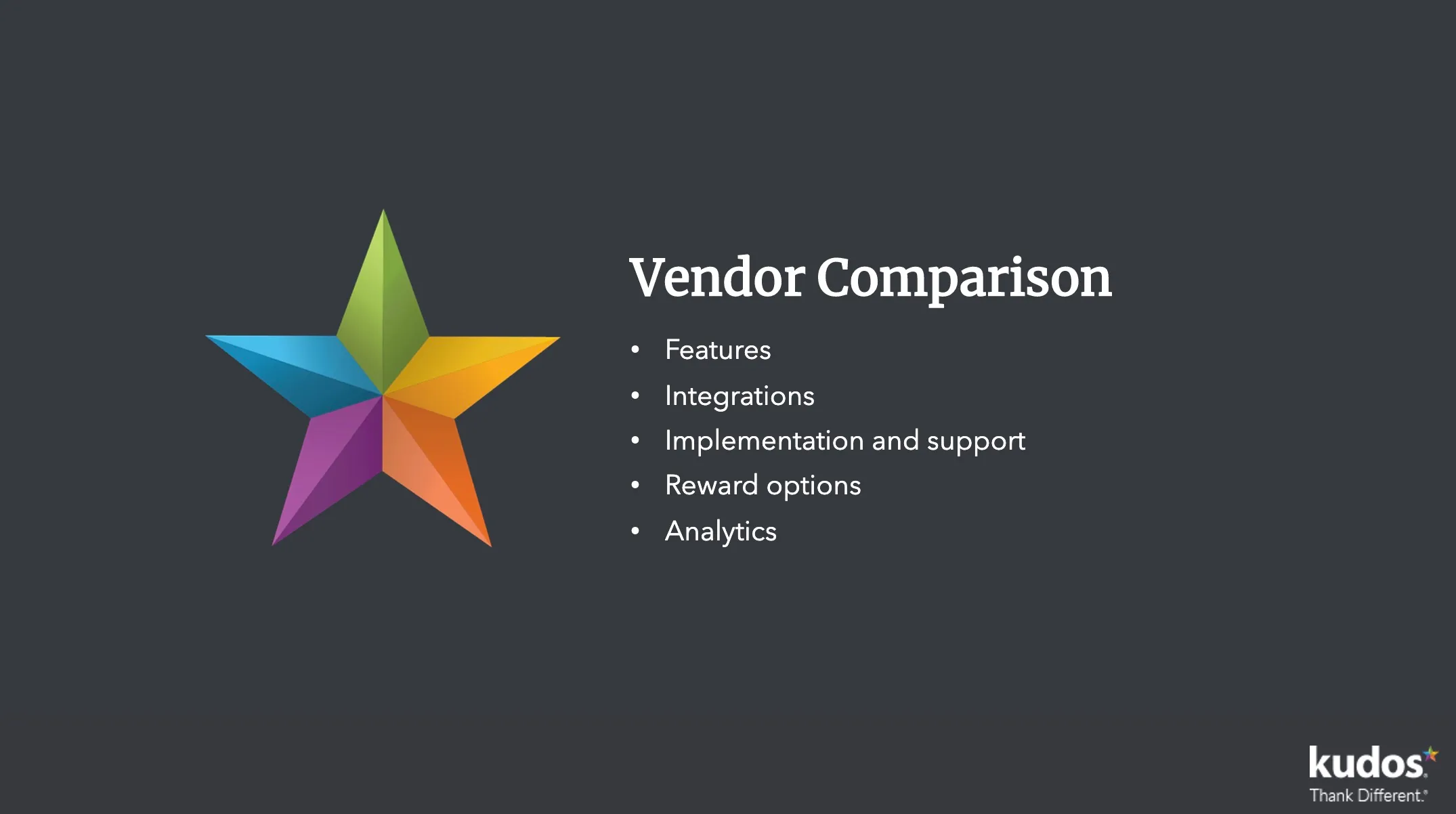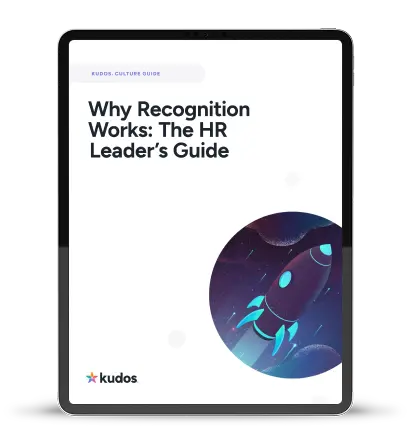8 Steps for Pitching Employee Recognition to Your Executive Team
Recognition
October 23, 2024
Margaux Morgante
X min
Recognition
October 23, 2024
Margaux Morgante
X min

This is part 3 of our 3-part “Making the Case” series, dedicated to helping you make a business case for employee recognition in your organization. Make sure to check out part 1 (Budgeting for Recognition) and part 2 (Calculating the ROI of Employee Recognition).
You've done your research, determined that recognition is an excellent solution to some of your organization's biggest pain points, and found a vendor you like (hopefully Kudos®).
It’s time to pitch to your leaders to get approval.
While this can be a nerve-wracking process, it's also an incredible opportunity to showcase your knowledge and expertise and impress your leaders with a solid business case.
In this article, we share a simple framework that will help you make a case for an employee recognition platform. That said, the framework presented can be used for virtually any business proposal.
Tip: Give an early preview of your pitch to a key stakeholder and get their advice and feedback. This does two things: (1) It allows you to address some issues that might come up before the larger presentation, and (2) it converts that stakeholder into a friendly face so that during the main presentation, they will already be on your side and may even jump in to answer questions from other stakeholders in the room.
Now let’s jump into the 8 steps you’ll need to cover to successfully make the case.

Capturing the attention of your audience is critical. The key to doing this is clearly explaining your mission and the purpose of your pitch. Lead with the business need, define what you’re proposing and why you’re proposing it.
Creating a mission statement for the initiative is a powerful way to do this. In the context of employee recognition, you could say, “my goal as an HR leader is to build a thriving culture based on measurable results. To achieve a thriving culture, we must reduce turnover, increase engagement, improve performance, and provide the tools for a more inclusive and happier culture.”
Another great way is to connect your pitch to your company’s core values. For example, you could state that although your organization values innovation, your employee recognition practices are stuck in the past.
Finally, a powerful way to set the tone for your presentation is to tell a story. Share a personal experience or anecdote that will resonate with your audience while showcasing the reason behind your proposed initiative.
When covering your organization’s current state, it’s crucial to create a sense of urgency.
Clearly illustrate that things are changing beyond the control of the company, and there will be winners, and there will be losers. This sets the stage for your leaders to want to be winners, and that not addressing these outside forces will cause the business to become less competitive unless they find a way to navigate these shifts effectively.
Another important component of this is the cost of doing nothing.
In the second article from this series, we present how to calculate the cost of absenteeism, turnover, and disengagement.
Using hard data like those numbers is a great way to demonstrate where you are today, where you want to go and how you’ll measure success. Comparing your organization to your competitors using benchmark data is also a great way to capture your executive team’s attention.
Clearly describe how the problem presented affects the business and impedes corporate success. Bring in actual data from your organization. When you finish this section, your audience should be convinced that doing nothing is not an option and should be eager to hear your proposed solution.
What exactly are you hoping to achieve? How will you measure success with your proposed solution?
These are questions you need to answer in this section of your presentation.
Another way to approach this section is to consider what outcomes you’re looking for and the drivers that can get you there.

What is the one most important thing that your manager or company could do to make a meaningful and far-reaching positive impact? In the case of employee recognition, you want to demonstrate that you’ve considered all possible options (or drivers) but have determined that recognition is the best solution to achieve your organization’s specific goals.
Describe the approach you’re proposing and the known benefits of that approach.
Now is the time to make your specific strategic recommendation. You’ve answered what will get you there; now it’s time to answer how.
This is where you propose your preferred vendor.
When recommending a vendor, it’s essential to show that you’ve compared various solutions to make the most strategic choice for your organization.

For employee recognition software, make sure to show that you’ve compared important features, including: Price per user, Rewards Markup, required integrations, support, analytics, mobile application, are rewards optional?
Show that you’ve done your homework, identified the most important qualities in a vendor, reviewed multiple options, and have a decision matrix that led you to your recommendation.
This Buyer’s Guide is a great resource; it includes an employee recognition vendor comparison checklist.
Once you recommend a concrete solution, the next thing you’ll need to address is the cost.
When approaching cost, a good starting point is to share benchmarks. For example, for modern employee recognition programs, the key cost benchmarks are:
Next, present the actual cost of your proposal. Our budgeting spreadsheet is an excellent tool for this step. Following the spreadsheet will ensure that you consider all inputs such as your employee count, whether you’ll be including rewards and additional fees. Using the spreadsheet will allow you to show that you’ve compared vendors based on the total cost of ownership and are presenting the actual cost difference between your proposed solution and its competitors.

Demonstrating the bottom-line impact of your proposal is often the most impactful part of the presentation.
The good news is that the financial benefit or ROI is undeniable with the right metrics when it comes to employee recognition platforms.
The ROI formula itself is relatively straightforward, and many of the required metrics should be readily available to you (e.g., turnover rate, engagement survey results, and absenteeism rate). You can see a step-by-step walk-through of how to calculate ROI here.
Beyond the ROI, demonstrating that your chosen solution has worked for other organizations is a powerful way to further support your case to a risk-averse executive team.
Examples you can use include:
A vital component of a business proposal or business case is to present what your solution will look like in practice.
Make sure your presentation identifies the internal champions (likely yourself) and that you have buy-in from the most critical stakeholders for this initiative, for example, in the case of employee recognition, the CHRO, or Head of People (if that’s not you).
Ask your preferred vendor for an implementation plan and timeline so you can accurately predict and plan for a suitable go-live date.
This part is the simplest but most often overlooked step. After working through your presentation, and answering any questions along the way, don’t forget to ask for permission to proceed with the initiative.
If your executive team indicates that they need more time to make their decision, make sure to immediately schedule another time to ask for the decision again.

Equipped with accurate budgeted costs, a persuasive ROI, along with a compelling and easy-to-follow presentation, you’ll be well on your way to getting the approval you are looking for to move forward with your plan.
Remember that if you are confident and committed to your proposal, you’ll foster confidence within your executive team. They want a reason to say yes; it’s up to you to make the case.

A newsletter with the best resources for HR professionals.


Propel your organization into new realms by building a culture of recognition that enhances morale and boosts performance across all levels.
Get Your Guide